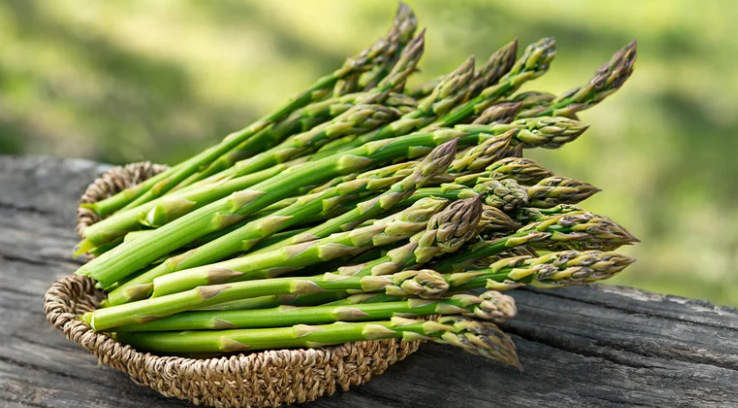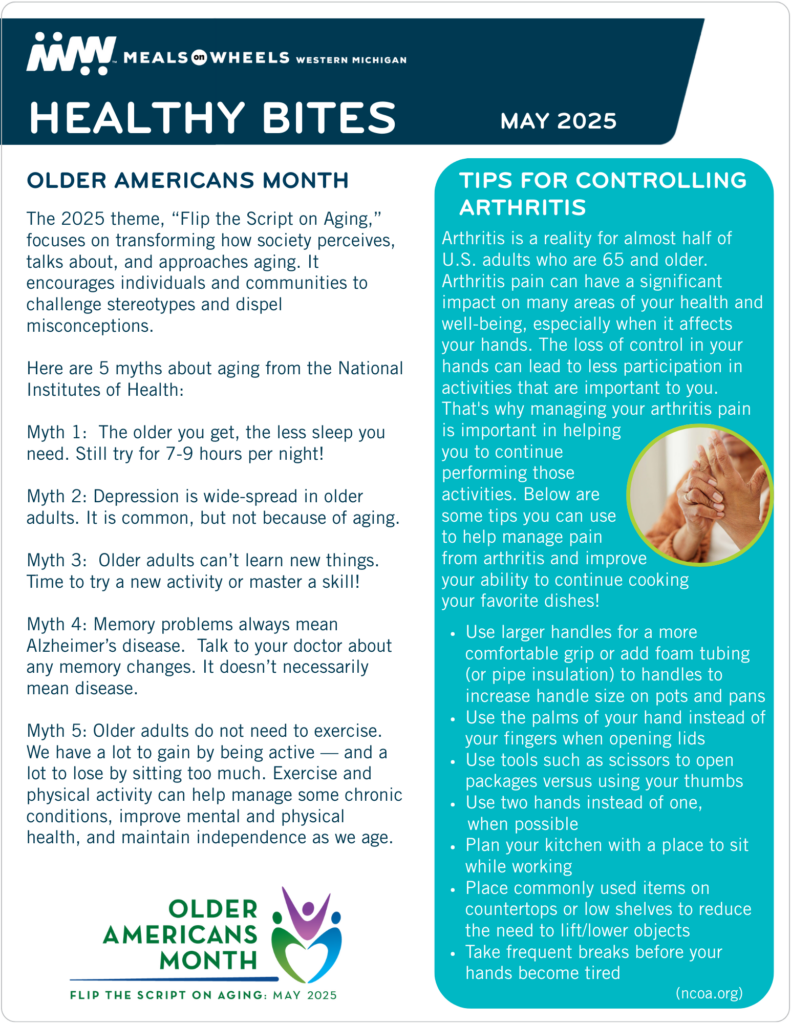It’s Older Americans Month!
The 2025 theme, “Flip the Script on Aging,” focuses on transforming how society perceives, talks about, and approaches aging. It encourages individuals and communities to challenge stereotypes and dispel misconceptions.
Here are 5 myths about aging from the National Institutes of Health:
Myth 1: The older you get, the less sleep you need. Still try for 7-9 hours per night!
Myth 2: Depression is wide-spread in older adults. It is common, but not because of aging.
Myth 3: Older adults can’t learn new things. Time to try a new activity or master a skill!
Myth 4: Memory problems always mean Alzheimer’s disease. Talk to your doctor about any memory changes. It doesn’t necessarily mean disease.
Myth 5: Older adults do not need to exercise. We have a lot to gain by being active — and a lot to lose by sitting too much. Exercise and physical activity can help manage some chronic conditions, improve mental and physical health, and maintain independence as we age.
Do Foods Affect my Blood Pressure?
They can! One of the most straightforward ways to help get your blood pressure under control is to watch what you put on your plate. To get control of blood pressure, it’s best to concentrate on overall healthy eating habits, rather than focus on one food in particular. Foods like fruits, vegetables and low-fat dairy are rich in nutrients that work together to regulate blood pressure.
And a little salt reduction goes a long way. One recent study found that cutting just a teaspoon of salt over a week lowered blood pressure by around 6 mm/Hg, about the reduction many people see when they take a common high blood pressure medication.
Blood pressure too high? Try adding in these foods today!
- Bananas
- Berries
- Spices (instead of salt to season)
- Nuts
- Whole grains (like oats, brown rice)
It’s Asparagus Month!
What are the health benefits of asparagus?
Asparagus is rich in antioxidants, fiber, minerals and vitamins. Here are five reasons to add a bunch of asparagus to your cart next time you’re rolling through the produce section. We also serve it on our menu!
1. A nutritious source of vitamins and minerals
2. Fiber and flavonoids for digestion
3. Nutrients to lower blood pressure
4. Compounds to help with a hangover
5. Antioxidants to combat free radicals
And if you’ve ever been concerned about why asparagus makes urine smell, there’s nothing to fear. When your body metabolizes asparagusic acid, a compound in asparagus, you get that strong, distinct smell in your urine. It’s just your kidney’s way of filtering waste, which is a good thing! Enjoy this tasty recipe for yourself!
(https://health.clevelandclinic.org/why-does-my-urine-smell)
Strawberry Asparagus Salad
Prep Time: 15 Min | Serves: 4
Ingredients
- 2 cups asparagus, cut in pieces
- 2 cups strawberries, washed and sliced
- ¼ cup lemon juice
- 2 Tbsp vegetable oil
- 2 Tbsp honey
Directions
- Blanch asparagus by filling a large bowl with ice and water.
- In a large saucepan, bring 1 inch of water to boil.
- Add asparagus, cover, and boil until its bright green, about 3-4 minutes. Immediately, remove from boiling water and plunge into bowl with water and ice to stop the cooking.
- Once blanched, scoop out the asparagus and toss with the strawberries in a separate bowl. Set aside.
- In a small bowl, combine the lemon juice, oil, and honey. Pour over the strawberries and asparagus and toss gently to coat.
- Chill before serving.
- You can add different berries to this salad or even put this on top of a spinach or romaine lettuce. Feel free to add some feta or parmesan cheese, too.
Tips for Controlling Arthritis
Arthritis is a reality for almost half of U.S. adults who are 65 and older. Arthritis pain can have a significant impact on many areas of your health and well-being, especially when it affects your hands. The loss of control in your hands can lead to less participation in activities that are important to you. That’s why managing your arthritis pain is important in helping you to continue performing those activities. Below are some tips you can use to help manage pain from arthritis and improve your ability to continue cooking your favorite dishes!
- Use larger handles for a more comfortable grip or add foam tubing (or pipe insulation) to handles to increase handle size
on pots and pans - Use the palms of your hand instead of your fingers when opening lids
- Use tools such as scissors to open packages versus using your thumbs
- Use two hands instead of one, when possible
- Plan your kitchen with a place to sit while working
- Place commonly used items on countertops or low shelves to reduce the need to lift/lower objects
- Take frequent breaks before your hands become tired





